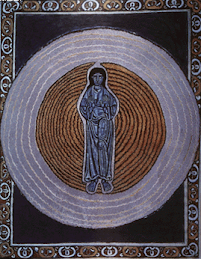There is a basic outline that informs any configuration of scripture. That is the story of God’s creating the world and declaring it good, the recognition that that goodness has been despoiled rather than lived into, God’s call of Abraham and his descendants to be a blessing to the nations, the deliverance of the exodus and return from exile, the growing expectation of God’s restoration of all things, Jesus Christ as the embodiment and fulfillment of that expectation, and the Church as the community called to bear witness to and live into that expectation.
Beyond that basic outline, what might be some guidelines to help us configure scripture such that we are more likely to end up with a portrait of the King rather than a fox while recognizing the complex ways in which we all make interpretive choices and give some portions of scripture priority over others? How do we recognize the King in a configuration of scripture while still accounting for the reality that we do not always end in the same place and not all faithful portraits will look exactly the same? Can we identify some guidelines or criteria by which we evaluate more faithful biblical configurations from less faithful or even faithless interpretations? Not all configurations are faithful. Not all faithful configurations are equally faithful. But there might be a range of recognizably, more or less, faithful configurations (St. Augustine thought so. See Augustine's Generous Hermeneutic). The following criteria based on how the canon of scripture came to be accepted and how the early church read the Bible, are suggested to assist in configuring the mosaic of scripture.
Next: Criterion 1. Jesus Christ
Beyond that basic outline, what might be some guidelines to help us configure scripture such that we are more likely to end up with a portrait of the King rather than a fox while recognizing the complex ways in which we all make interpretive choices and give some portions of scripture priority over others? How do we recognize the King in a configuration of scripture while still accounting for the reality that we do not always end in the same place and not all faithful portraits will look exactly the same? Can we identify some guidelines or criteria by which we evaluate more faithful biblical configurations from less faithful or even faithless interpretations? Not all configurations are faithful. Not all faithful configurations are equally faithful. But there might be a range of recognizably, more or less, faithful configurations (St. Augustine thought so. See Augustine's Generous Hermeneutic). The following criteria based on how the canon of scripture came to be accepted and how the early church read the Bible, are suggested to assist in configuring the mosaic of scripture.
Next: Criterion 1. Jesus Christ





No comments:
Post a Comment